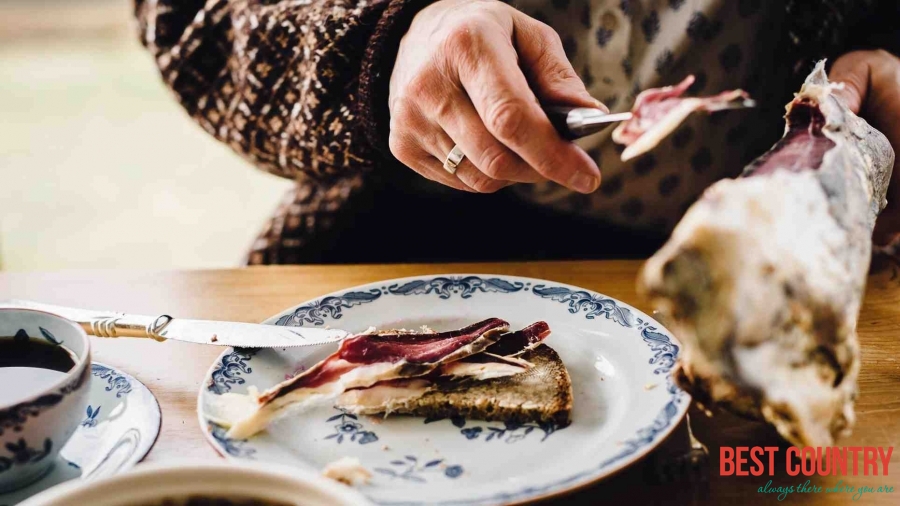Important parts of Faroese cuisine are lamb and fish, due to the proximity to the ocean. Traditional food from the Faroe Islands include skerpikjt (a type of dried mutton), seafood, whale meat, blubber, garnatlg, puffins, potatoes and few fresh vegetables.
Faroese cuisine
 Much of the taste of this traditional country food is determined by the preservation methods used; brine, drying and the maturing of meat and fish, called ræstkjøt and ræstur fiskur.
Much of the taste of this traditional country food is determined by the preservation methods used; brine, drying and the maturing of meat and fish, called ræstkjøt and ræstur fiskur.
Animal products dominate Faroese cuisine. Popular taste has developed, however, to become closer to the European norm, and consumption of vegetables has greatly increased in recent decades while consumption of fish has diminished.
Fresh and ræst lamb meat remains very popular while traditional meat products, such as various types of sausages, have lost a lot of their appeal with younger generations.
Fish
Fish dishes in the Faroe Islands are caught in the waters of the North Atlantic Ocean. Fresh fish can be had all the year round. Islanders eat mostly haddock, plaice, halibut, herring and shrimp.
Meat
Traditionally the main source of meat was the domestic sheep, the most common farm animal in the Faroe Islands. However, sheep were also used for their wool.
The most popular treat is skerpikjøt, well-aged, wind-dried mutton which is quite chewy. The drying shed, known as a hjallur, is a standard feature in many Faroese homes, particularly in the small towns and villages. Other traditional foods are ræst kjøt (semi-dried mutton) and ræstur fiskur, matured fish.
Game
Small game in the Faroe Islands consists mostly of seabirds.
Whale
Traditional dish consisting of dried pilot whale, blubber which has been brined, cooked cold potatoes and dried fish.
Another Faroese specialty is Grind og spik, pilot whale meat and blubber.
Imported foods
Since the friendly British occupation, the Faroese have been fond of British food, in particular fish and chips and British-style chocolate such as Cadbury Dairy Milk which is found in many of the island's shops, whereas in Denmark this is scarce.